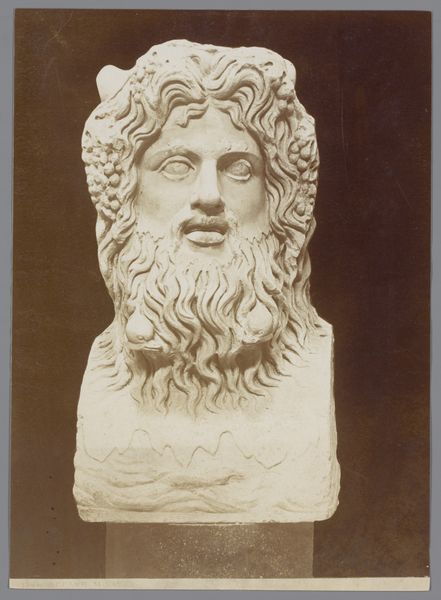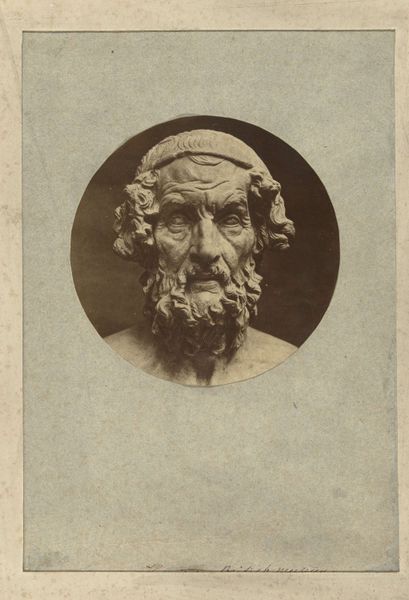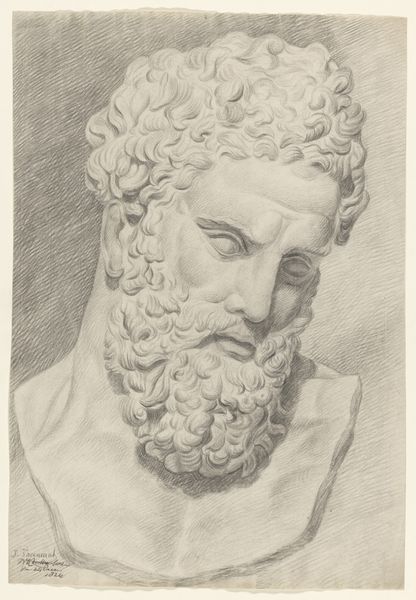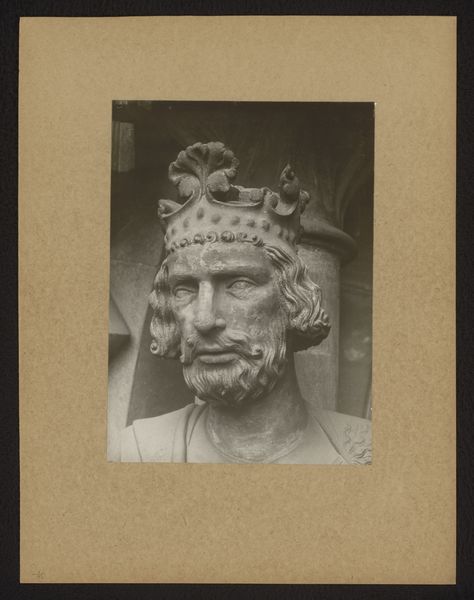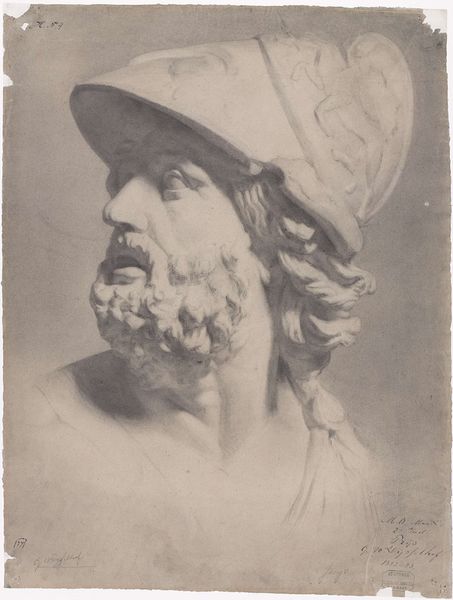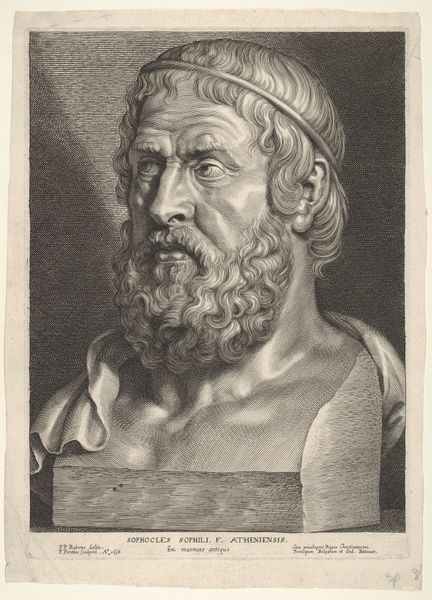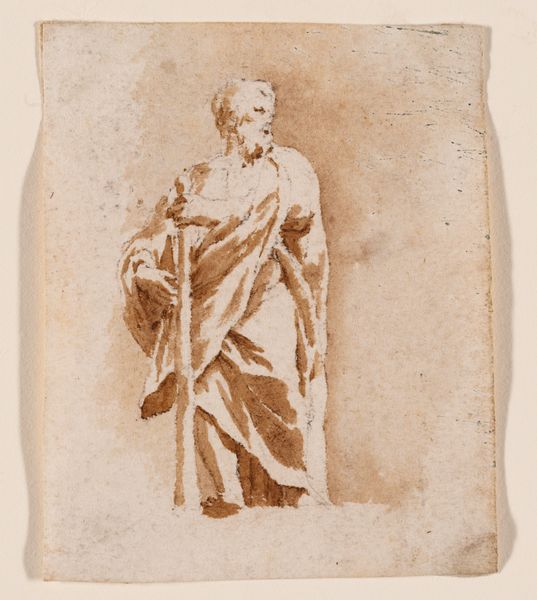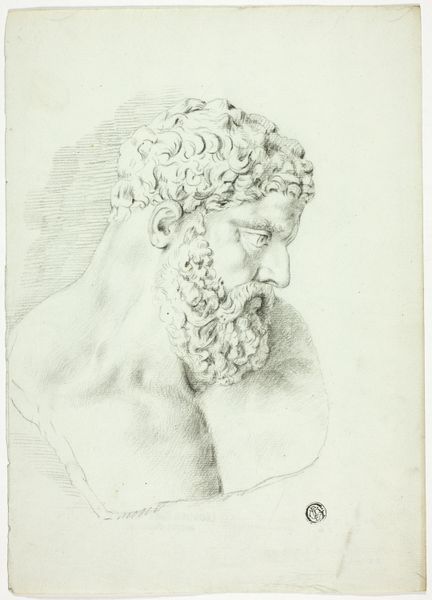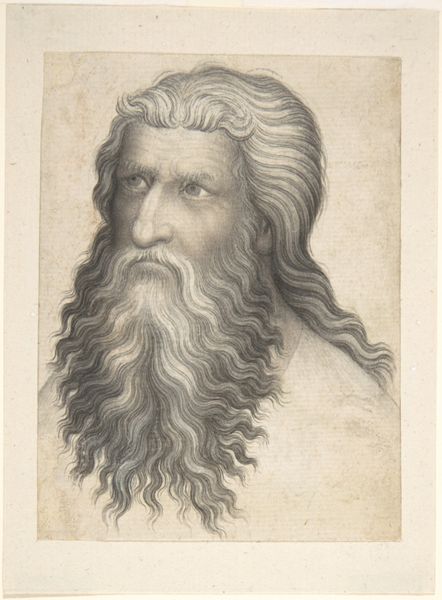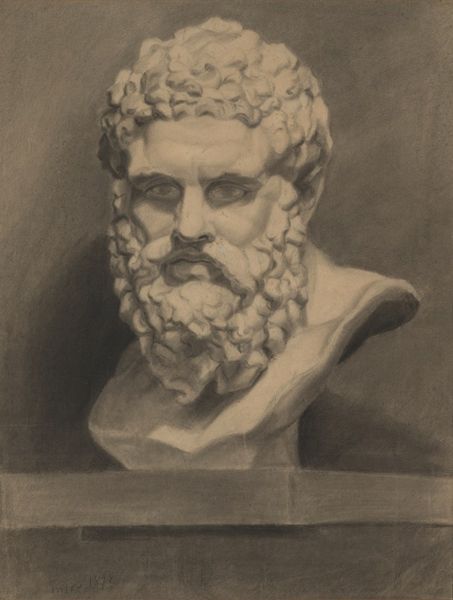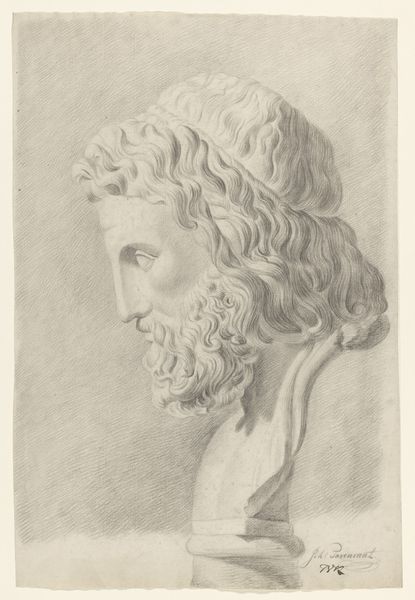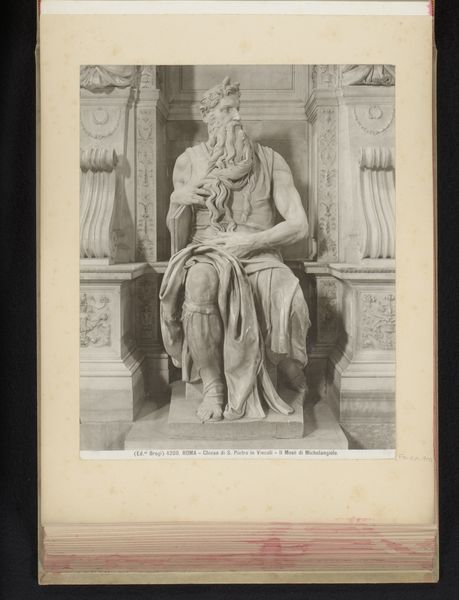
photography, sculpture, gelatin-silver-print
#
portrait
#
greek-and-roman-art
#
classical-realism
#
photography
#
framed image
#
sculpture
#
15_18th-century
#
gelatin-silver-print
#
statue
Dimensions: 47.2 x 18.0 x 22.0 cm
Copyright: Public Domain
Curator: Isn't there something inherently eerie about seeing a photograph *of* a sculpture? This one is especially haunting... It's a gelatin-silver print, dating from around 1795, called "Fate Atropos" by Asmus Jakob Carstens. Editor: Eerie is spot on. There's a strange double removal happening here, a rendering of a rendering. What hits me first is the somber quality; the sepia tones amplify that stoic expression and create an overall melancholy mood. Curator: I agree! This portrayal of Atropos, one of the Greek Fates, comes across quite differently in this medium. Carstens usually worked with drawings and paintings, so the choice to capture it through photography adds another layer of complexity. Atropos, who cuts the thread of life, usually has a sense of drama around her, yet here she appears still, almost meditative. Editor: Absolutely, and the stillness has something to say about who had access to that "thread of life" as it was playing out in the artist's life and in that era. I'm thinking of how the subjugation and ownership of human life was justified and even sacralized... The way the photographic process has immortalized and elevated Atropos speaks volumes about the hierarchies Carstens inherited and consciously or unconsciously replicated. Curator: You make such a valid point; it forces me to consider the perspective Carstens brought. He was working within a Classical Realism style and no doubt intended to elevate through what we can now identify as limited aesthetics and viewpoints. It reminds us of the power we imbue within historical figures –even mythological ones like Atropos. Editor: Indeed. This work encapsulates a complex dance between art, power, and perspective. Seeing this photographic echo, we can begin to hear echoes of past narratives of control and reckon with their lasting resonances. Curator: Beautifully said. The photo manages to reveal something new despite it capturing old artistic language and mythology. Editor: Well, hopefully, it makes people think critically, too. If all art could invite self-reflection, we'd be in a much better place, don't you think?
Comments
stadelmuseum about 2 years ago
⋮
In ancient mythology, the fate of mortals is decided by the three Parcae, the Fates. Atropos was one of them and responsible for severing the thread of life. Carstens, however, follows the philosopher Plato’s interpretation and shows her as a seer who can foretell the future and possible calamities: with a serious face and her mouth wide open, as if crying out to the viewer. Carstens dispensed with the execution of arms, thus creating a figure resembling an antique sculpture without limbs (torso). This sculpture was very popular in the 19th century and is the only surviving sculptural work by the artist, who was primarily known for his painting and draughtsmanship.
Join the conversation
Join millions of artists and users on Artera today and experience the ultimate creative platform.
